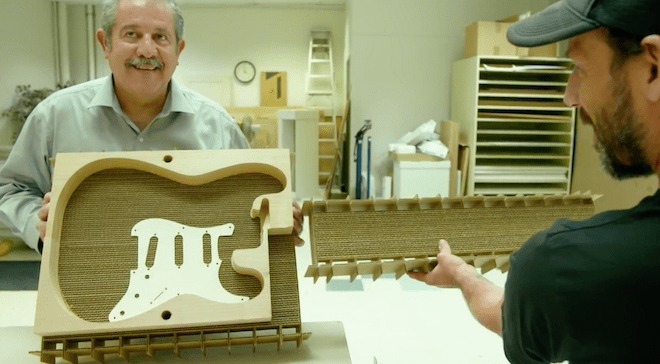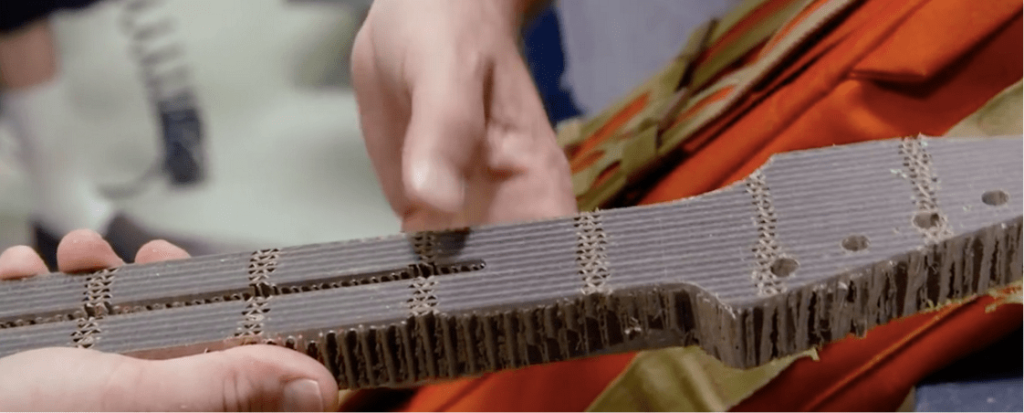Cardboard Fender Guitar Questions Get Answered
January 21, 2016

Oh my! Who would have thought that our crazy little cardboard Fender Stratocaster would have become the viral hit that it did? (To be honest, we had a feeling). But, just look at the love we got from places like Hypebeast, Gizmodo, Daily Mail, Popular Mechanics and, of course, the one and only Fender Blog!
A common question we’ve fielded from comments on videos and media coverage is “how was the cardboard guitar constructed?” You ask, we oblige. We went down to the Ernest Packaging Solutions’ Design Lab to get more info from Mike Martinez on the construction and future of the cardboard guitar.
What were the most unique challenges to designing the body and neck?
The first thing I thought about was stacking layers horizontally with different cutouts to suit the layer it was occupying. But, then when I saw the milling at Fender and the guitars themselves, it changed my strategy completely. I needed to give them a good core, and they could take it from there.
How did you choose the flute size for the core?
The big challenge was figuring out how big we could go on the flute. The smaller the flute, the more we can stack. We tested both B- and C-flute with a heavy liner—what we call a 275 test mullen paper with a heavier basis weight—to give it strength. C-flute was a little too big, so we went with B that gives that amazing see-through characteristic we all loved.
What about the neck and the tension of the strings?
The neck of a guitar is normally maple wood that is used for furniture and is very tough. The neck is then reinforced with a steel rod, so it doesn’t move around with the tension of the strings. We wanted to make sure the cardboard neck didn’t bow when the strings were tuned and tightened. We used the same B-flute for the neck and the body. Each had about 30 individual pieces of corrugated cut out for their position in the form. It took us about four forms before we knew we had it right.
Will you get papercuts when you slide your hand along the neck?
I wanted to backfill where you slide your hand with resin and polish it to make it smoother, but Fender didn’t want to do that as it would have lost some of the see-through quality. But no, you won’t get a papercut from the neck because it’s been milled. A fresh die cut one would shred you, though.

What about the hardware?
Everywhere there was a little screw hole we used a backfill that was structural epoxy. That way the screw could grip something and bite into it.
So can it get wet?
You don’t want to play it in the rain, no. No form of paper likes to get wet, and corrugated is no different. We needed good glue contact between the layers, but using too much would cause problems when it was put into the mold. Eventually, we found the right mix to give it hold without dampening it.
What is next for the paper guitar?
There has been a lot of interest in this guitar from fans and manufacturers. We will be at NAMM (National Association of Music Merchants) in Anaheim January 21st showcasing what we’ve done with Fender.
Fender has been great to work with, and we’re still working on some changes to maximize the strength and WOW-factor of the guitar. I’m excited because we aren’t done with this project and are looking at ways to beef up the second and third guitars in the works, so stay tuned!
To see what’s in store for the cardboard Fender Strat, or for that matter our next Cardboard Chaos challenge, subscribe to our blog today!


